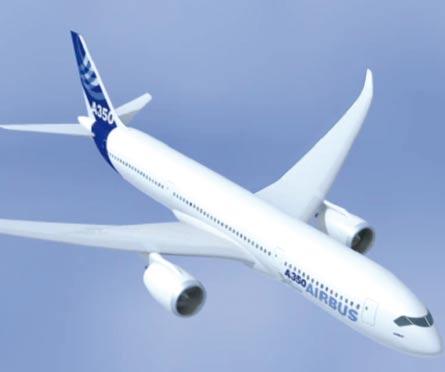French tools business adapts technology used on Boeing 787 wing to develop prototype tape-laying machine
Airbus could be favouring a composite nose section for the A350 XWB using the advanced composite machining technology currently used on Boeing's 787 wing.
Forest-Liné, a French machine tools business based in Capdenac in the Aveyron region, is working on the design and production of a prototype tape-laying machine for the automatic production of large-dimension double-curve carbonfibre structures, say industry sources.
Once the structure is developed, the European airframer could produce it itself. Airbus and Forest-Liné decline to comment.
Forest-Liné already supplies Mitsubishi Heavy Industries' (MHI) Nagoya plant, where the Japanese manufacturer produces the carbon-fibre wings for the rival Boeing 787.
Over 60% of the A350's weight will comprise advanced materials, says Airbus |
Earlier this year, Forest-Liné delivered the first of four Linear Atlas tape-laying machines as MHI started production on the Boeing aircraft.
At the A350's industrial launch earlier this month, Airbus confirmed that it had yet to deliver a definitive specification for the new three-model €10 billion ($13.3 billion) twinjet family to the market.
However, the airframer said that over 60% of the aircraft's weight would comprise advanced materials, with composites representing more than half (52%), and aluminium and aluminium lithium the next largest components accounting for 20%.
Airbus executive vice-president programmes Tom Williams also confirmed that although the rear fuselage section would, like the A380, be made of carbonfibre, both carbonfibre and metal remained candidate materials for the construction of the A350 XWB nose section.
He added: "If we go with carbonfibre, we'd produce it as a single piece."
According to information on Forest-Liné's website, the 25t Linear Atlas machines supplied to MHI measure 40m (131ft) long and 8m wide.
These laminate the 787's upper and lower wing panels at a rate of 60m a minute, each panel being a single double curvature piece.
Forest-Liné says the machines can accept tape widths of up to 300mm (12in) and are capable of highly complex cuts, ensuring that the design weight of the aircraft structure is achieved.
Source: Flight International




















